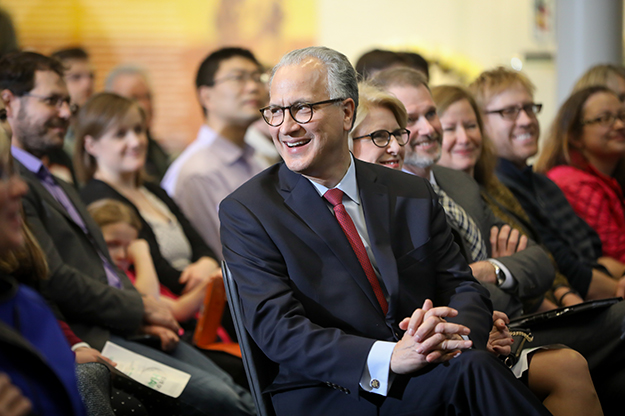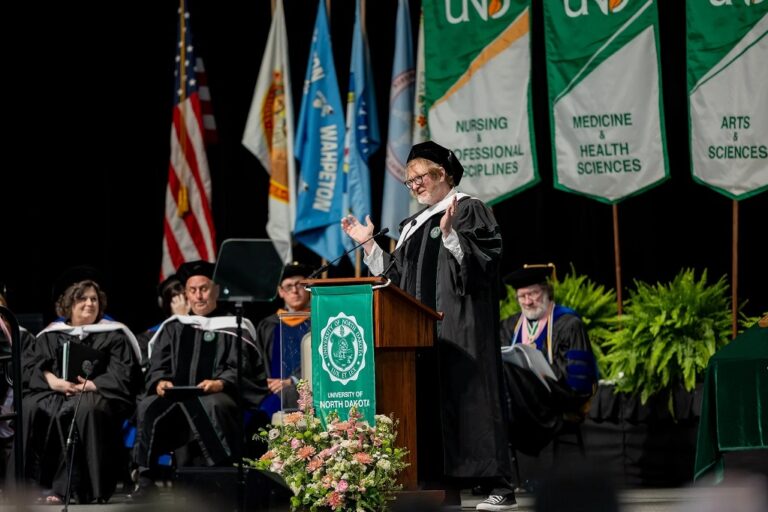Higher education: Path to brighter future
Kennedy: Invest more, not less, in universities to diversify the state’s economy and to provide needed talent to grow and succeed

In an article published in the spring of 1985, I identified the most valuable thing I gained as a first-generation college graduate was a heightened curiosity, “questioning the unquestioned truth.” The conventional wisdom today is that North Dakota is in hard times and we must hunker down, cutting our state’s investment in higher education significantly. We should all ponder whether this is the best path.
I am not unfamiliar with being frugal. In my early years, I shared a bedroom with two sisters and a brother. As I grew older, I shared a small bedroom with three brothers. We only had one choice of cereal in the morning – Corn Flakes – because it was the cheapest on the shelf.
Those like me — from families without a tradition of college education — are the most expensive for a university to serve. They require extra assistance to find the resources to afford college and navigate through to graduation without the counsel of family mentors who have walked the path before them. Twelve hundred first-generation college students are enrolled at UND today. These students are the ones most impacted by budget cuts.
Thankfully, penny-pinching parents and strong support for higher education in the 1970s allowed me to become the first boy in my family to graduate from college. My St. John’s University degree got me a good job in the midst of the recession caused by the 1979 oil shock. A little over a year later, fortune smiled on me again when I married Debbie, a farm girl from Hawley, Minn.
Debbie’s late father, Stanley, a small farmer, was surprised that she wanted to be the first in her family to go to college. Thankfully, Stanley added feeder pigs to diversify his operation and generate the money to allow Debbie to graduate from NDSU.
After being married for barely a year, I quit work to pursue graduate studies at the University of Michigan. Later in life, Debbie shared with me that Stanley could not understand why the young man who had just married his daughter would quit his good-paying job and head back to school. Like some today, Stanley could not then perceive the value of higher education.
The opportunities opened by my Michigan degree allowed me to pay off my school loans early. The lift that higher education provided me is broadly available to others.
The average debt among borrowers who earn their bachelor’s degree at a public university is $25,500, while the average additional lifetime earnings for bachelor’s degree holders in $1 million — a 40-to-1 payoff. At the peak of the last recession, the unemployment rate of recent college graduates was less than half that of recent high school graduates. Ninety-nine percent of the jobs created since the last recession went to workers with at least some college education.
States also benefit from having more college graduates. Relative to high school graduates, college graduates contribute $350,000 more in lifetime taxes relative to the benefits they receive. A state has more money to spend if it has more college graduates. And statistics show that college graduates are also more likely to innovate, to contribute to charitable causes, to volunteer, to vote. These activities nurture communities and attract more graduates to stay in a state.
Cultivating a curiosity that challenges the consensus view has kept UND continually reinventing itself while staying true to its liberal arts core — dropping some majors while adding degrees vital to the state’s future, like petroleum engineering and unmanned aviation, and adding online programs that today serve nearly 3,000 students.
North Dakota is the second largest oil-producing state and has an above average per capita income. It can afford to continue to nurture premier universities as it thankfully has in the past.
Piercing through today’s fiscal fog, a curious mind might consider whether the best path to returning to economic health would mean investing more, not less, in universities whose research diversifies the state’s economy and who provide the talent our state needs to grow and our citizens need to succeed.
Stanley’s first instinct would have been to be supportive of the sizeable budget cuts currently being charted in North Dakota. Yet when he weighed this against the value that education provided to both Debbie and me, and how it opened doors for our children — his grandchildren— to follow, he might have come to question today’s consensus view.


